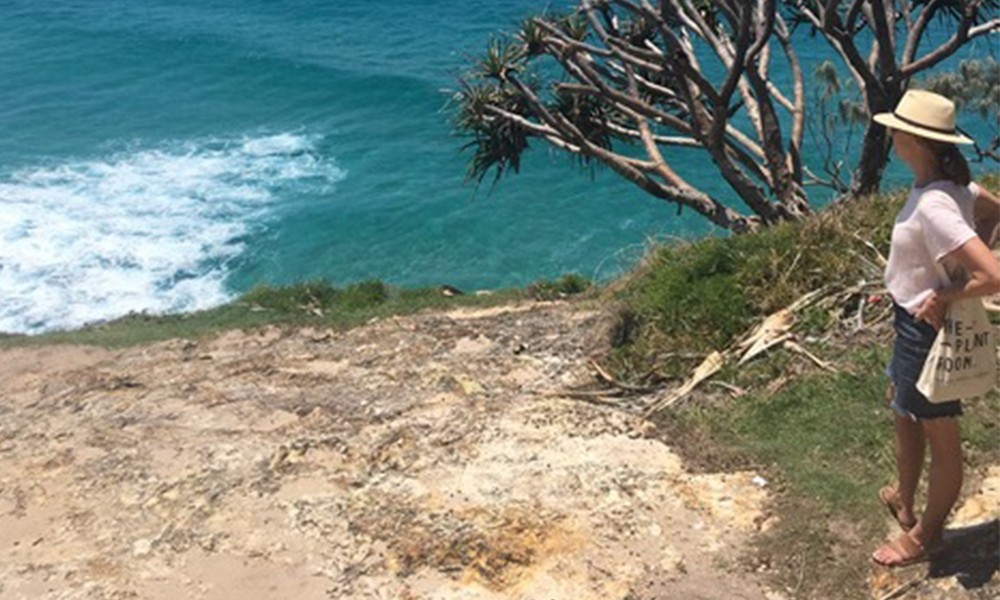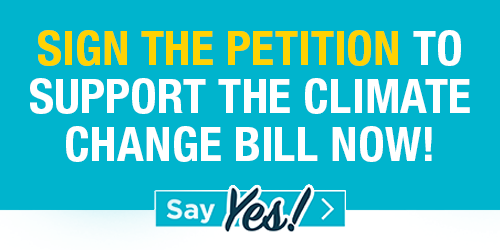Experts are predicting that our ‘blue planet’ could die as soon as 2048. Australians are paying the price this Summer because the Government ignored the warnings about the bushfires. Unless we listen to the scientists, our next apocalypse could be oceans without fish.
It no longer feels like I am living in the Lucky Country. I live in Sydney and I recently walked down for a morning swim wearing my swimmers and a face mask. No, not a snorkelling mask, a mask to protect me from the smoke and ash in the air. The bushfires of Summer 2019 and 2020 were predicted and the death of marine ecosystems will be real too if we continue on our path of overfishing, pollution and burning fossil fuels.
The consequences of "empty oceans" will mean a whole lot more than not having any seafood to eat. If the oceans die, we won't have enough oxygen to breathe. We owe every second breath we take to the ocean. Like me, you probably thought we got all our oxygen from trees and plants, but over half the oxygen we breathe is generated by marine plankton and kelp (which release oxygen during photosynthesis). Oceans not only supply us with oxygen, they absorb and store CO2, locking it away in the ocean so it can't contribute to the climate crisis. The oceans give us life itself, and what do we give it? Plastic, and lots of it.
There are big things and small things that need to be done to stop our oceans dying. Big things like cutting fossil fuel emissions and transitioning to 100% renewable energy. You are probably thinking 'how on earth am I going to help?' , well we can all do small, daily actions and if we all do them together, we can be a part of the solution.

[The author by the ocean. Supplied]
Here are some actions we can all do:
- Be fussy when choosing your sunscreen
Australian summers are synonymous with beach going and sunscreen but many sunscreens contain dangerous particles and reef harming chemicals. Choose mineral sunscreens with zinc oxide or titanium dioxide (without nanoparticles).
Avoid sunscreens containing oxybenzone and octinoxate. These chemicals are absorbers and the chemicals can be absorbed into your skin and also the ocean. Hawaii and the Pacific island of Palau have already banned sunscreens with these ingredients. We should pressure our government to ban them too!
- Minimise microfibres from clothes and swimwear ending up in the ocean
An estimated 8 million tonnes of plastic enters the ocean every year. We've all been disgusted by images of "the great pacific garbage patch" floating off the west coast of the US. In addition to this highly visual problem there are tiny, unseen microplastics in our oceans that are doing damage too and we can do something about them.
When you wash clothes made from synthetic fibres (such as nylon, polyester, acrylic and polyamide) plastic microfibers dislodge from the clothes and end up in our waterways. A single load of washing can release hundreds of thousands of microfibres.- The best solution is to choose clothes made from natural materials like organic cotton, linen and wool and avoid synthetic fibres.
- Use a washing bag, like a Guppyfriend, that acts as a filter, capturing the microfibres before they leave the washing machine.
- Only wash full loads. Full loads means less friction and less microfibres will be released.
- Don't wash too often - hanging clothes on the line in the sunshine to deodorise saves on washing after every wear.
- Minimise microfibres from your swimmers breaking down and getting into the water by gently rinsing your swimmers in cold tap water, followed by air drying out of the sun after every use. Getting rid of chlorine and salt is essential to maintain the strength of the fibres.
Unavoidably, most swimwear is made from synthetic fibres, so in other words, they contain plastic. Microfibres from your swimmers, board shorts and rash vests end up in the ocean causing havoc for our water quality and our marine life. And when our marine life consumes the microplastics they can end up on our dinner plates.
Increasingly, eco-minded swimwear designers are using fabrics like Econyl and Oeko Tex 100 which are made from recycled plastics, including nylon from fishing nets. This is a great way to reduce the amount of plastic in our oceans through repurposing, but the bottom line is these fabrics still contain plastic that will end up in our waterways.
We need to pressure textile and swimwear manufacturers to get creative, inventing new materials for our swimwear that don't damage our oceans.
- Leave nothing but footprints when you leave the beach
Don't leave anything at the beach that can wash into the ocean on the next tide and harm our sea life. I am counting on you having already banished plastic bags from your life. The next step is if you are having a beach picnic or party, please don't use any single-use plastic items like takeaway containers, cutlery or cups and absolutely no balloons, straws or glitter (it's made of plastic too). Remind yourself of those heartbreaking photos of sea creatures that have ingested balloons thinking they are jellyfish, and turtles with straws in their nostrils.
- Join a local beach clean up group
Search online or check with your local council. I ran into some folk from responsible runners recently doing a great job at my beach. Another group to check out is take 3 for the sea.
Get onboard with these actions and help protect our oceans!
By Allison Licence
Allison Licence is a Sydney-based freelance writer and 1 Million Women volunteer who is passionate about the environment and finding ways to live more sustainably.
Header image: Zoe Holling, Unsplash

